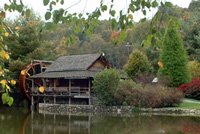INTRODUCTION
In the past soil or soil mixes were commonly used in greenhouse production. However, the difficulty, expense, and sustainability issues of dealing with soil have lead to the almost exclusive use of soilless media mixes for greenhouse production. There are some important exceptions such as organic in-ground tomato production and cut flower production, but in general if you go to work for a greenhouse you can expect to see soilless media being used. Soilless mixes are more uniform, lighter to ship, and perhaps most importantly sterile and free of disease. This module introduces you to different types of media that are used in greenhouse production both current and historical. You will also learn about the properties of this media. This module requires mostly reading and learning some new vocabulary. It is relatively short, but will build the foundation required for some more intense modules in upcoming weeks.
LEARNING OBJECTIVES
- Describe the uses of soil and soilless media in the greenhouse industry
- Review proportions of solids, water, and gases in soils
- List the functions of soilless media an soil used as root substrates
- List and describe the common materials used to produce soilless media
- Familiarize yourself with the vocabulary of root substrates
peat
aeration
automation
hardwood bark
perlite
softwood bark
vermiculite
plant nutrients
growing medium
humus
peat moss
mulch
sphagnum moss peat
rhizoctonia
peat bogs
rock wool
fine texture
C:N Ratio
bulk density
perlite
polystyrene foam
pH
Coir
CEC
medium texture
coarse texture
READING ASSIGNMENT
- Chapter 6. Root Substrate. pages 197-236
- Chapter 7. Root Substrate Pasteurization. pages 237-256
- Review Media (PDF of PPT) File from Colorado State (this will be a good review AFTER reading the chapter)
ACTIVE LEARNING EXERCISES
- Review Slide Show Introducing Root Substrates (shown below)
- Go to the Greenhouse Digital Repository and search the images using 'Root Substrate', choose 5 images of interest to you and describe how the image relates to the material covered in this module. (20 pts)
STUDY QUESTIONS
- What are the functions of any root substrate? (soil-based or soilless) (4 pts).
- Why are soil-based root-substrates rarely used in the greenhouse industry today? (6 pts, answer in complete sentences)
- Explain in your own words how root substrate texture is related to plant water availability and aeration (6 pts, answer in complete sentences).
- In number 3, how does the relationship you describe manifest itself into greenhouse management where different sizes and shapes of pots must often be used. (4 pts)
- Design a table of desirable root substrate properties. For each property describe the optimum condition and quantitative recommendations when available (i.e., in the case of pH give a common recommended range of values) (15 pts, you can create a table or create a spreadsheet for this exercise).
- Based on available water alone which root substrate would be the best for a greenhouse crop and which would be the least preferable? (4 pts, Table 6-1 of textbook).
- Produce a graph of %Water and %Air available in 8,6, and 4 inch pots filled with a media made from 1 peat moss: 1 vermiculite (Table 6-2). What physiological process can be impacted by decreased air availability to the roots. (10 pts)
- In the first video following the questions the business produces all their own media. What are some of the challenges associated with custom producing your own root substrate? (6 pts)
- In the second video, a greenhouse tomato producer uses compost as a regular amendment. What are some benefits and potential hazards of this practice? (5 pts)
- Discuss reasons why coir use in the greenhouse industry has increased greatly in recent years. (Answer in complete sentences, 5 pts).
- You are growing 5,000 poinsettias for the holiday market. You are producing 'Prestige Red' in 6" standards. How many cubic feet of media will be required? (5 pts, show your work).
- In a special native plant project you have made the highly unusual decision to use soil. You heat the soil up to 185 F, but are still having unacceptable losses due to disease. Hypothesize what your problem might be. (5 pts).
- Methyl bromide at one time was the chemical pasteurization agent of choice. Explain why its used is being phased out and discuss some alternatives (5 pts).
Locate a picture of an automated root substrate process utilized in the greenhouse industry. Briefly describe how this could be of economic benefit to the business using it.



No comments:
Post a Comment